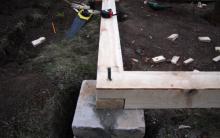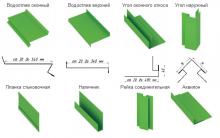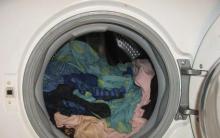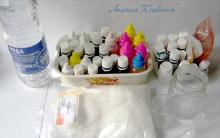Eco-friendly stone paper, which can replace wood pulp paper, is composed of approximately 80% calcium carbonate (CaCO3) and 20% non-toxic polymer. It is more resistant to moisture, heat, fire, grease, chemicals and insects. Absorbs 20% less ink compared to traditional paper.
Brief characteristics of stone paper:
Stone paper (other names: limestone or mineral) is a combination of calcium carbonate with non-toxic polymer HDPE. It is similar in appearance to traditional paper. But in its properties and qualities it is significantly superior to ordinary paper made from wood. It is bright white in color and soft to the touch.
Stone paper contains approximately 80% calcium carbonate (CaCO3) and 20% non-toxic polymer, which is used as a binder. To make such paper, calcium carbonate powder is used, which is obtained by grinding ordinary limestone to a dust state, and binds it with non-toxic synthetic resin HDPE (high-density polyethylene).
Regular paper made from trees also contains calcium carbonate. But its content is small - no more than 20-30%.
Paper made from stone does not require water, acids, bleaching or wood, so its introduction will reduce deforestation on the planet.
Advantages of stone paper:
– less energy is used for manufacturing,
– No harmful chemicals (acids, bleaches, etc.) are used in the production of stone paper.

– stone paper has eco-friendly composition and safety for nature,
– materials available in large quantities for production,
– can be completely recycled for new use,
– more resistant to moisture, heat, fire, grease, chemicals and insects,
– more tensile strength,
– absorbs 20% less ink compared to traditional paper,
– eliminating the cutting down of trees and forests on the planet for paper production,
– durable, waterproof, tear-resistant material,
– suitable for recycling and disposal,

– does not decompose by microorganisms, but in nature quickly decomposes into basic components,
– resistant to abrasion,
– does not contain chlorine, acids,
– characterized by fat resistance,
- ease of production. The production of stone paper eliminates a number of technological operations and complex, expensive equipment.
Comparison of the production of different types of paper:
| Production of pure traditional paper: | Production of recycled traditional paper from waste: | Production of paper from stone: |
| The production of 1 ton requires 20 trees and 38,000 kJ of energy. Bleach is used. | The production of 1 ton requires 4 trees and 23,000 kJ of energy. Bleach is used. | The production of 1 ton requires 0 trees, 12,000 kJ of energy. No bleaches or reagents are used. |
| 73 m3 of contaminated water is produced as waste. | 41 m3 of contaminated water is produced as waste. | No waste. |
Stone paper can apply:
– for the manufacture of packages, packaging;
– for the production of books, notebooks, magazines, envelopes, etc.;

– for printing and advertising applications;
– for outdoor use (with added UV protection).
Prospects for the use of stone paper:
Calcium carbonate is one of the common materials on Earth. It is obtained both as an independent raw material during mining and as a waste.
At the same time, deforestation on the planet is an environmental problem for all humanity.
The destruction of forests leads to very negative consequences: some species of flora and fauna disappear, natural disasters intensify (temperature increases, the greenhouse effect intensifies, floods become frequent, etc.). Areas left without forest as a result of deforestation become deserts, since the loss of trees leads to the fact that the thin fertile layer of soil is easily washed away by precipitation.

Using stone paper will solve this problem and improve the environmental situation on planet Earth.
Note: © Photo by https://www.pexels.com.
![]()
![]()
plant technology production receiving stone paper notepad
buy stone paper with your own hands price 543
Demand factor 986
Polls
Does our country need industrialization?
- Yes, we need it (90%, 2,486 votes)
- No, not needed (6%, 178 votes)
- Don't know (4%, 77 votes)
Search for technologies
Technologies found 1
Might be interesting:
-
In early 1990, a Taiwanese company developed a technology for making paper from stone to save trees and patented it.
The paper is made from waste from the mining and processing of various rocks and is durable and water-resistant.
Executive Director of the company “Mongol Chuluun Tsaas”, B. Dorzhsuren says that this technology has already been successfully used in more than 40 countries around the world.
B. Dorzhsuren
Paper production is a necessary business, but it has a detrimental effect on the environment. Trees are destroyed, water is polluted, and large amounts of energy are consumed. Considering that preserving the green cover of the planet is one of the most important tasks of humanity, alternative methods of paper production are becoming very relevant. Therefore, this technology has aroused great interest among Mongolian entrepreneurs.
The basis for such paper is calcium carbonate. Note that it is also found in regular paper, but in smaller quantities. Calcium carbonate is obtained from minerals that are most often discarded during the extraction of raw materials used in the construction industry. That is, waste from the extraction of limestone, marble, and so on is used to produce new paper. The rock is crushed until it turns into fine chalk dust. Then non-toxic synthetic resin HDPE is added to it - this is high-strength polyethylene to bind dust particles. The resulting mass contains 80% calcium carbonate and 20% HDPE. The output is snow-white, smooth and soft paper that is resistant to water and abrasion.

This paper does not contain acids or chlorine and is completely safe for the environment. This paper is grease-resistant and almost does not tear.
Its production is environmentally friendly because calcium carbonate is taken from mining waste, and this resource is renewed much more quickly. Since the paper is made from stone, it is not biodegradable. When exposed to ultraviolet light (such as the sun) and moisture, high-density polyethylene breaks down in about a year, returning calcium carbonate to a solid form. For example, eggshells are 95% calcium carbonate and decompose in the same way. In addition, the process of producing stone or, as it is also called - synetic, limestone, mineral paper - does not require cutting down trees.
According to B. Dorzhsuren, All the raw materials necessary for production are located in the Erdenet Mining and Processing Plant. For years, people have complained about white dust near the Erdenet mining and processing plant, threatening the health of residents in the area and the local ecosystem. The problem of dust generated during the processing of rocks has been repeatedly discussed in the press.

The new company is able to solve this problem in the best possible way and with great benefits for the environment.
There are several stone paper brands currently available, such as FiberStone, Terraskin and Rockstock. Soon the Mongolian brand will be on a par with them" Mongol Chuluun Tsaas", which means "Mongolian stone paper" or "Mongolian stone paper".

Note that to produce 1 ton of clean paper, it takes 20 trees, 38,000 kJ of energy, produces 73 cubic meters of contaminated water, uses bleaches, and contains only 20-30% calcium carbonate (rock).
Producing 1 ton of recycled paper requires 4 trees, 23,000 kJ of energy, creates 41 cubic meters of contaminated water, uses bleaches, and contains 20-30% calcium carbonate (rock).
Making 1 ton of paper from stone requires no wood, creates absolutely no dirty water, and uses half the energy needed to make recycled paper or a third of the energy to make 1 ton of clean paper. Mineral paper production does not use bleaching reagents and does not pollute the atmosphere.
The most important thing is that the trees remain unharmed. This means that the production of such paper can save millions of hectares of forest.
Stone paper is suitable for all types of printing: you can print everything on it that you can print on regular paper.
Ecology of consumption. Paper production is a necessary business, but it has a detrimental effect on the environment. Trees are destroyed, water is polluted, and large amounts of energy are consumed.
Paper production is a necessary business, but it has a detrimental effect on the environment. Trees are destroyed, water is polluted, and large amounts of energy are consumed. In light of measures to preserve the green cover of the planet, alternative methods of obtaining paper are becoming very relevant. Therefore, manufacturers became interested in making eco-paper from stone.
The basis of environmental paper is calcium carbonate. Note that it is also found in regular paper, but in smaller quantities. Calcium carbonate is obtained from minerals that are most often discarded during the extraction of raw materials used in the construction industry. That is, to produce new paper, waste from limestone, marble, and so on is used. The rock is crushed until a fine chalk dust is obtained. Non-toxic synthetic resin HDPE is added to it - this is high-density polyethylene - to bind dust particles. This substance contains 80% calcium carbonate and 20% HDPE. The output is snow-white, smooth and soft paper, resistant to water and abrasion. It contains no acids or chlorine and is completely safe for the environment. This paper is grease-resistant and almost does not tear. It is suitable for outdoor use, especially if supplemented with UV protection.
Note that it takes about 20 trees to produce a ton of regular paper. In the process of its production, 38,000 kJ of energy is consumed, and water in the amount of 73 cubic meters is polluted. In addition, bleaches are used, this also happens when producing recycled paper. For it, however, fewer trees are cut down - four per ton of finished material. Recycled paper production consumes approximately 23,000 kJ of energy and pollutes approximately 41 cubic meters of water. Both virgin and recycled paper contain up to 30% calcium carbonate. Making a ton of paper from stone requires no trees, uses half the energy needed to make recycled paper, and does not pollute water. This paper does not need bleaching. Mineral paper is environmentally friendly in every way. It can be recycled with plastic and regular paper. When exposed to sunlight, the HDPE resin degrades within a year and the calcium carbonate returns to its original solid form, which is natural to the environment. If mineral paper is destroyed in waste recycling factories, it will not release toxic substances into the atmosphere when burned.Manufacturers will have no shortage of raw materials for mineral paper, since calcium carbonate makes up about 70% of the total minerals on Earth. Currently, there are several stone paper brands, such as FiberStone, Terraskin and Rockstock.. published
Global paper production is growing every year, and along with it, the number of trees cut down on the planet is also growing. But it turns out that to produce paper it is not necessary to destroy hectares of forest and all its inhabitants, because this thing necessary for our civilization can be made from limestone and polyethylene.
Limestone papermaking technology was first developed in Taiwan about 20 years ago. Paper made from this common and fairly cheap material was strong and durable, and its characteristics were in no way inferior to traditional paper. The technology for its production was patented in several dozen countries and today the production of stone paper, as its manufacturers call it, is carried out in several countries, including Taiwan and Japan.

Alternative paper consists of 80% crushed limestone (CaCO3), with the remaining 20% being polyethylene, which acts as a binder. Apart from significant savings in wood (and to obtain 1 ton of paper, about 20-25 trees are required to be cut down), the stone paper production technology has almost no impact on aquatic ecosystems, which cannot be said about pulp and paper mills. The fact is that almost no water is used in the production of stone paper, while about 100 tons of water are required to produce 1 ton of paper.

Stone paper is denser and stronger, and has increased resistance to moisture and pollutants. This type of paper is great for making bags, magazine covers and notepads, business cards, postcards, tags, booklets and other paper products.

Today, the production of stone paper is already carried out in several countries, but Japan is the recognized leader in this area. And this, perhaps, is not surprising, because it is in Japan that they pay special attention to the environment and treat nature with care.











Fabulous and festive stencils for window decorations for the New Year
How to choose a watermelon - determine ripeness and sweetness How to tell if a watermelon is ripe or not
How to connect a water heater in a country house Connecting a boiler in an apartment
How to make a reliable drainage system on your site with your own hands How to drain a garden plot with your own hands
How to make drainage around the house - options for drainage systems, design rules